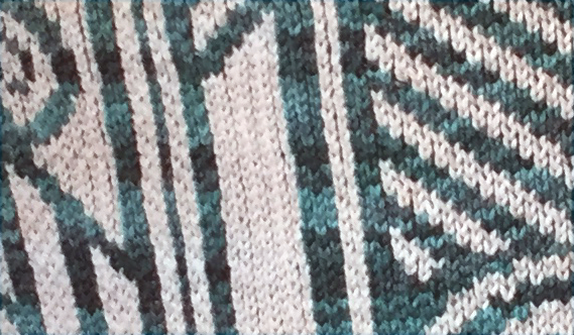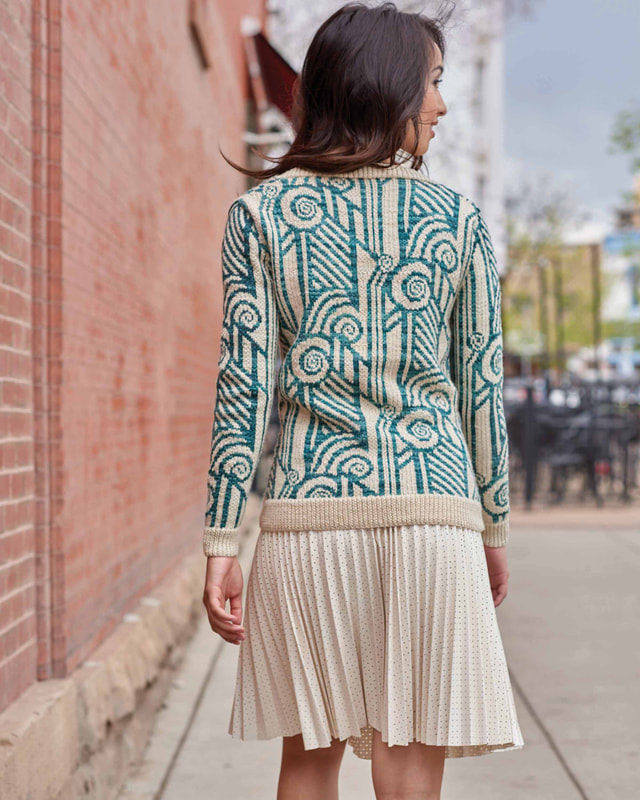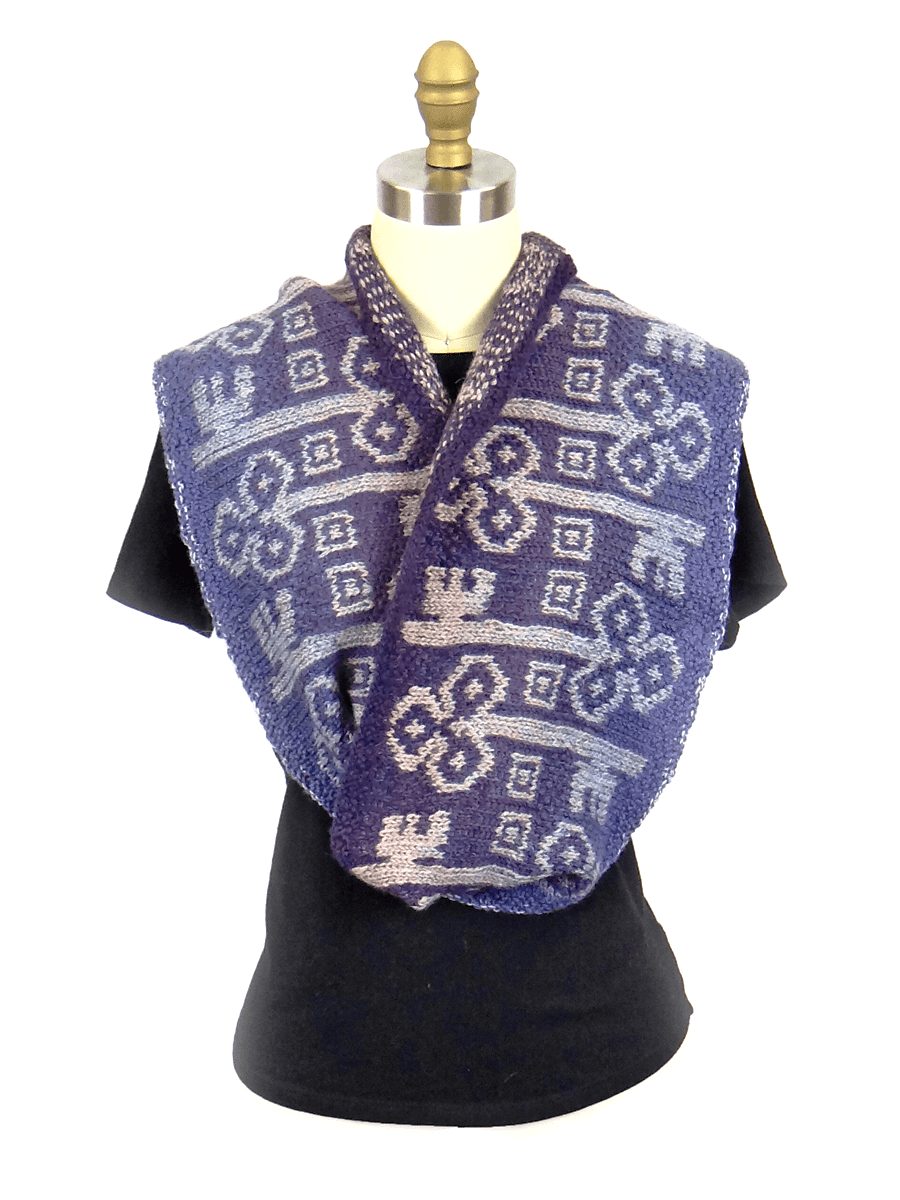|
Locked floats (also referred to as "Armenian Knitting") is an amazing stranded knitting technique that creates a gorgeous interior. It reduces the challenges a person might have with their knitting tension and reduces the risk of fingers or jewelry getting caught on the interior of a sleeve. The finished work also has interesting patterning on the non-public side that happens by following the simple rule of securing/trapping the floating yarn every other stitch of the same color. I received an email from Roxie the other day who is working on the All Who Wander cowl and the trapped floats are peeking through to the front of the work: I have taken a couple of your online classes and am comfortable with locked floats . I am currently working on your All Who Wander cowl. My challenge is to avoid having the secured strands show through on the front/right side. I have worked on my stranded skills and my work is flat without bunching. I can still see yarn in the back showing through. Do you have any suggestions that would improve my technique?
When I'm knitting, I like to keep the "rules" pretty simple. For locked floats, I encourage my students to secure the floating yarn every second stitch of the same color. We do this exactly the same way throughout the entire project. That means that when we are working a column of stitches that are all the same color, the place we are securing the floats will stack vertically. That's why every other column in that section of stitches also sticks up a little more than its neighbor. It reminds me a little of a farmer's field - with peaks and valleys. The good news is that if the entire project is stranded, AND you follow the rule of trapping the floating yarn when working every second stitch of the same color, then every trapped float has the same opportunity to peek through the fabric. Working consistently results in a fabric with repeated secondary pattern elements on the wrong/back side as well. ...so, what can I do to minimize seeing floats on the right side of the fabric?When knitting a stranded colorwork pattern, there are a few decisions that are made which can help reduce the amount of sneaky, peaky floats. For a more successful finished object, take time to consider the following:
Needle Choice While knitting, consider using needle one size smaller if the space between stitches is too open. Even switching from wood to metal needles can sometimes affect gauge, so check out different tools to see what might be the best combination for your project. Practice It's true that the results improve the more we utilize a technique. If locking floats is new for you, allow yourself time to become confident in the method before tackling a large project. Need a refresher on the techniques? Check out my tutorial videos. If you have questions about locked floats or other knitting techniques, send me a message. It is always fun to hear from fellow crafters! Stay crafty,
-Kyle |
Archives
July 2023
Categories
All
|
ExploreFor Fun
|
Support |
Connect |
© 2006-2023 Kyle William. All Rights Reserved.





 RSS Feed
RSS Feed
